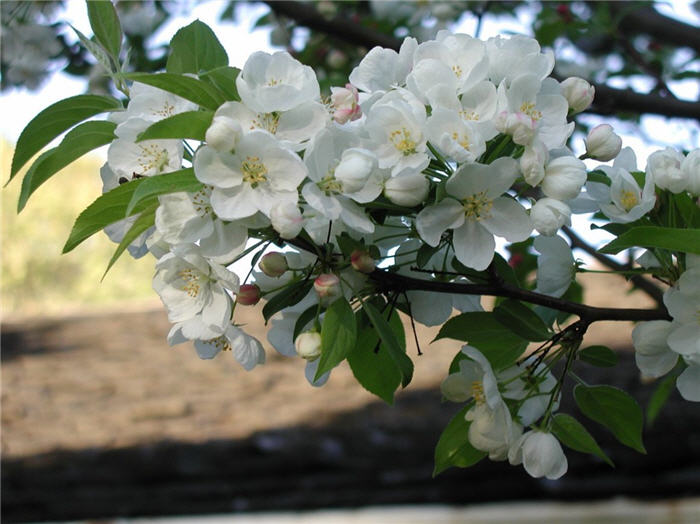| Botanical Name: Malus 'Snowdrift' | |
| Common Name: Snowdrift Crabapple |

-
Anatomy
-
Culture
-
Design
Plant Type
Tree
Height Range
12-25'
Flower Color
White
Flower Season
Spring
Leaf Color
Green
Bark Color
Brown, Grey
Fruit Color
Orange
Fruit Season
Fall
Sun
Full
Water
High
Growth Rate
Moderate
Soil Type
Clay, Loam
Soil Condition
Average, Rich, Well-drained
Soil pH
Acid, Neutral
Adverse Factors
Attracts Bees, Messy
Design Styles
English Cottage, Japanese, Ranch
Accenting Features
Espalier, Showy Flowers, Specimen
Seasonal Interest
Spring, Summer, Fall
Location Uses
Background, Perennial Border, Shrub Border, Walls / Fences
Special Uses
Screen, Mass Planting, Small Spaces
Attracts Wildlife
Birds
Information by: Stephanie Duer
Photographer:
Photographer:
-
Description
-
Notes
Snowdrift crabapple is upright, rounded crabapple growing to 15 to 20 feet tall and wide. It has pink buds that open to white flowers in the spring, followed by orange-red fruit. Leaves are lustrous dark green, with an orange fall color. Fruit is not persistent so place it where the mess won't matter...for instance, in a shrub border or surrounded by a tallish groundcover.
Crabapples are well adapted to many soil types but appear to do best in clay loams and sandy clay loams. Soil pH should be slightly acidic to neutral to slightly alkaline (6.0 to 8.0). Plant in full sun, where nearby trees will not shade them excessively. Water regularly and deeply. See Resources for more information.